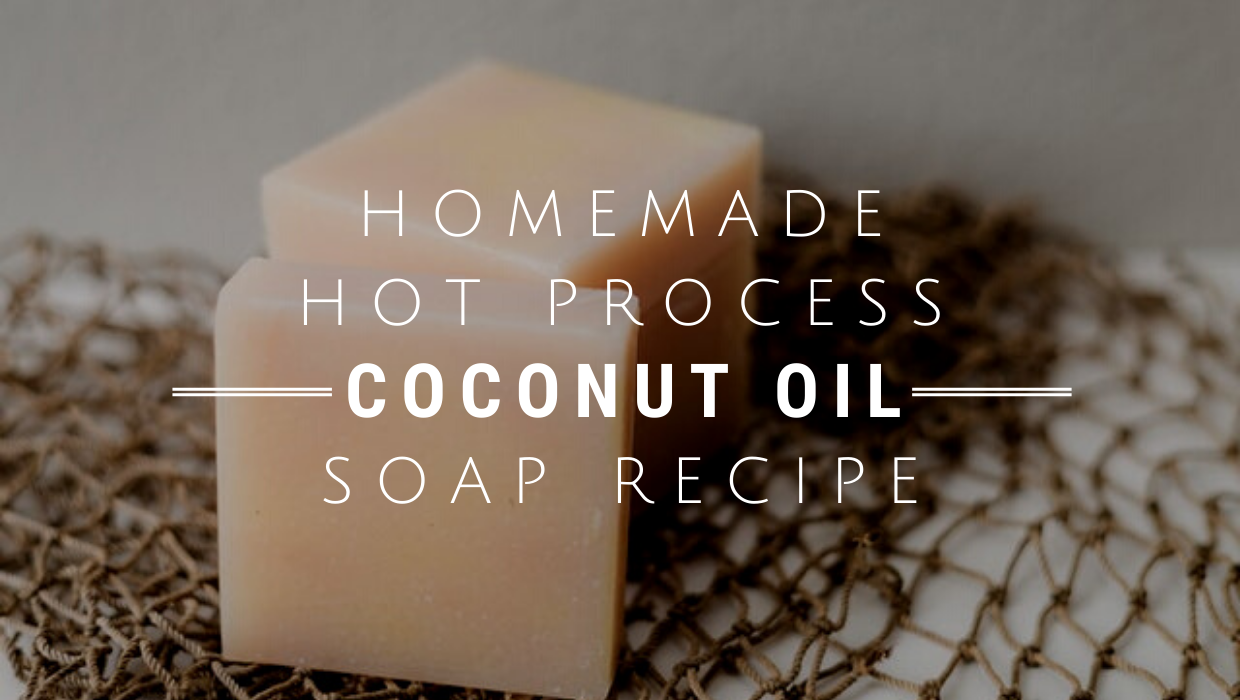Coconut oil soap is probably the simplest recipe you’ll ever make for soap. It takes only 3 ingredients and has an amazing lather. And if you’re willing to forego some rules, it can be among the foremost versatile, too. Here’s what I mean:
Traditionally, soaps are made of 5-7 oils blended to balance cleansing/moisturizing/and lathering properties. One of the documented “rules” is that a bar of soap should be manufactured from over 30% coconut oil because it’s so efficient at cutting oil/grease that it may be dehydrating.
Fortunately, there’s how to simplify things without skimping on the final product – it’s called “superfatting.” You add the equivalent of “one-quarter moisturizing cream” like big brands do; only you leave out the toxic slew of chemicals that typically accompany it. If you add 20% more coconut oil than the lye can adapt to soap, you complete it with an extravagant body bar. But, this doesn’t work with most vegetable oils that go sour easily – coconut oil’s high shelf durability is what makes it a natural choice.
The best part? Not only are you able to superfat and obtain the simplest of both worlds for your skin, but you’ll also break another rule and get your laundry clean, too!
How To Adapt This Recipe to create Laundry Soap
Typically it’s not advised to create a soap with under 4% superfat thanks to the very fact that it is often excessively drying and even burn the skin if a number of the lye remains unconverted, except for laundry soap it’s perfect!
I’ve found that employing a 1% superfatted recipe yields a cleansing bar with no extra oil. Since I’m washing my clothes to urge oil OUT instead of putting it IN, this works on my behalf. I’ve washed my hands with this version and haven’t had any irritation, but I recommend it only for laundry.
Here’s the complete scoop on making your cleanser using just the laundry soap recipe below and 1 other component.
You cannot break this rule:
One of the foremost common questions about soapmaking is the way to make it without lye. As I share in five legends that have stopped you from making soap (but shouldn’t!), both are required to cause a reaction called saponification – aka producing soap.
Technically, you’ll wash your face with oil using this method, but it’s an entirely different approach.

How to make coconut oil shampoo bars
This 3-ingredient pure coconut oil soap is ideal for both cleansing your skin and your laundry! Plus, it’s probably the simplest soap you’ll ever make – Click for the photo tutorial!
How To purify coconut oil Soap (For Cleansing And Laundry)
Ingredients
All amounts are per weight. You’ll get to use a digital scale for these measurements.
- Lathering Skin Bar (20% superfat)
- Makes approximately 44 oz. of soap. Note: Because this soap is very superfatted, it can create a dense lather when rubbed directly on the skin. For a light-weight, bubbly effect, I like to recommend lathering with a natural sponge like this one.
- 33 oz coconut oil, 76 degrees* (where to shop for coconut oil)
- 4.83 ounces lye (NaOH)** (where to shop for lye)
- 12.54 oz water
- .5 – 1 ounce essential oils (optional)
- Laundry Soap (1% superfat)
- Makes approximately 44 oz. of soap.
- 33 oz coconut oil, 76 degrees* (where to shop for coconut oil)
- 5.9 ounces lye (NaOH)** (where to shop for lye)
- 12 oz water
- .5 – 1-ounce lavender or other essential oils (optional) (where to shop for lavender essential oil
* For soap making purposes there are several sorts of coconut oil . the things I buy features a freezing point of 76 degrees. This is often the foremost commonly available kind and, therefore, the preferred type for soap making. There’s also a coconut oil that features a freezing point of 92 degrees and another that’s “fractionated,” meaning that the long-chain triglycerides are removed, leaving only saturated fats. I even have not tested this recipe with either the 92 degree or fractionated oils, but it works well with the 76-degree type.
You’ll often find pure lye with no additional plumbing/drain additives within the drain cleaner section of a mom n’ pop ironmongery shop. Lye may be a present substance which will be made by burning hardwoods and boiling the ashes, but it’s much easier only to buy. If you don’t see it, ask a salesperson for help. They’ll be keeping it behind the counter because it’s multiple uses. Be prepared to elucidate that you simply want to form soap.
Equipment:
Note: You can use your regular kitchen utensils as long as you follow these guidelines.
- Crockpot – 8-quart
- scale
- digital thermometer
- stick blender
- glass measuring cups
- small glass bowls
- A plastic spoon with a long handle (if you employ a wooden spoon just like the one pictured below, confirm that it is not used for love or money but soapmaking)
- rubber spatula
- A sink or bowl crammed with vinegar and water for cleaning anything that comes in touch with lye. Clean with soap afterward.
- protective gear: long-sleeved shirt, plastic/rubber mitts, safety glasses or shielding eye gear
- soap mold – (where to shop for oval soap mold or square soap mold), a typical sized bread pan is ideal for this batch. Cardboard boxes also will work
- parchment paper for lining the soap mold (where to shop for parchment paper online
The Method:
- Set your crockpot to low and get your components ready (measure and weight)
- Add h2O to a medium glass or ceramic dish and take it outside alongside the lye and long-handled spoon. While wearing your protective gear and not breathing the vapors, slowly add the lye to the water while mixing gently. Order is vital here, so confirm it’s the lye you’re pouring into the water. Adding lye to water to form coconut oil soap The mixture will get remarkably popular, so be cautious! Let it transition from murky to clear, then bring it indoors. Let cool for 5-10 minutes while you’re engaged in step 3.
- Place coconut oil during a pot and warmth to 120-130F. Verify that your thermometer isn’t touching the bottom of the pan.
- Set your crockpot to low and add the coconut oil.
- Add lye to the crockpot (being careful not to splash) and stir a couple of times. Adding lye to the crockpot for clean process soap.
- Using the stick blender, begin processing toward “trace.” Trace is when the mixture has the feel and density of a light-weight pudding.
- Cover and let cook on low. During this process, the oils should get up the edges sort of a wave then fold back to the mixture. Typically, 45 minutes – 1 hour, but the cooking time will vary counting on how hot your Crock-Pot is. Check thereon often. If it rises up the edges and looks like it’s overflow, it just provides it a fast stir, and it’ll reduce in volume. hot process soap
- When the soap is prepared, it should look a touch like semi-translucent vaseline with no oil puddles within the middle. There are two ways to check and see if it’s done. Insert a PH test strip and wait several minutes for it to change color completely. It should be between 7-10. If it’s above 10, it’s not done. For a rather less scientific approach, take a touch of the soap and rub it between your fingers. It should feel a touch waxy. Now touch it to your tongue. If it ‘zaps’ you, it’s not done. Note: it’s essential to form sure all the lye is converted – otherwise, the finished soap can burn! testing hot process soap
- Wait until the mixture is cool to the touch to add essential oils. Otherwise, they’re going to lose their fragrance.
- Spoon mix into your mold and let chill. If you would like to hurry up this process, put it within the fridge.
- Unlike other bars that require to harden for twenty-four hours before being cut, coconut oil makes a soundbar, which will be challenging to chop if you let it dry too long. Cut as soon as it’s calm and firm.
- Find a place with good airflow. Put the bars on a rack or tray with about an inch between them. Allow them to dry out and cure for an additional few days. Though you’ll try your first bar directly, it’s best to allow the conditioning properties to fully develop, approximately 2-3 weeks.
Shelf Life
About one year when stored in a very cool, dry place.
Disclaimer: sodium hydroxide is very caustic. Handle it carefully and knowledgeably. It’s the soap maker’s responsibility to research safety procedures for soap making.


